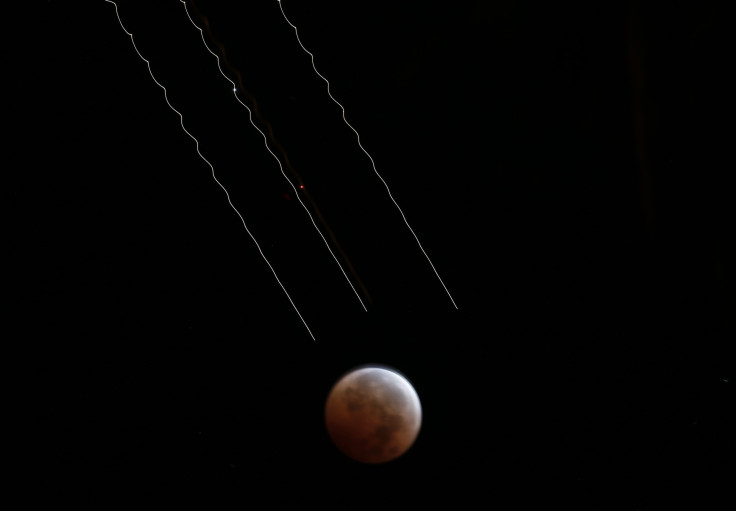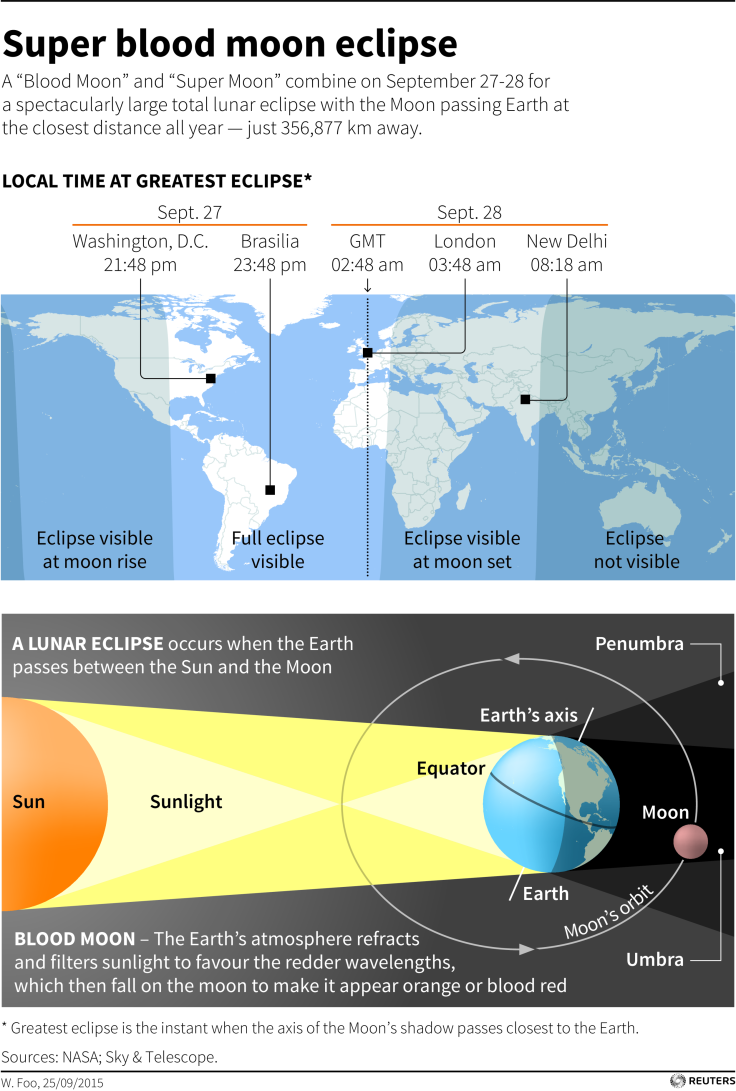Supermoon Total Lunar Eclipse Live Stream: Watch The Astronomical Main Event Here

Don't worry. Sunday's supermoon total lunar eclipse won't be creating havoc, so just enjoy watching it. Weather permitting, the supermoon lunar eclipse will be visible across most parts of the Earth. If you can't view the event, or just want to add some expert voices to your viewing party, NASA and Slooh have supermoon lunar eclipse live streams beginning at 8 p.m. EDT.
A supermoon total lunar eclipse happens around every 30 years as a result of a cosmic alignment. On the Internet, some want to attribute more apocalyptic meaning to the event, but fears of Doomsday shouldn't weigh on stargazers Sunday. "The only thing that will happen on Earth during an eclipse is that people will wake up the next morning with neck pain because they spent the night looking up," Noah Petro, deputy project scientist for the Lunar Reconnaissance Orbiter at NASA’s Goddard Space Flight Center, said in a statement.
The moon at perigee has no real measurable effect on Earth, which means no giant shifts in Earth's tides. The gravitational pull of the moon will not be wreaking havoc on Sunday's slate of football games either. "The Earth has stored a tremendous amount of internal energy within its thin outer shell or crust, and the small differences in the tidal forces exerted by the moon [and sun] are not enough to fundamentally overcome the much larger forces within the planet due to convection [and other aspects of the internal energy balance that drives plate tectonics]," NASA explained.

Sunday's astronomical event combines two of the moon's favorite tricks. The supermoon is the result of Earth's natural satellite reaching its closest point to Earth -- known as perigee -- in its orbit. The close proximity creates an optical illusion where it will appear slightly larger -- around 14 percent -- and brighter than usual. A total lunar eclipse occurs when the moon passes into Earth's shadow. Earth's atmosphere filters out blue light, leaving red light to pass onto the moon. This effect has led to the "blood moon" nickname. The total lunar eclipse begins when the moon enters Earth's shadow at 8:11 p.m. EDT. The first signs of a shadow will start at 9:07 p.m. EDT. The total lunar eclipse begins at 10:11 p.m. EDT and peaks at 10:47 p.m. EDT, according to NASA.
NASA's live stream originates from Griffith Observatory, Los Angeles, beginning at 8 p.m. EDT. The broadcast will include a solar physicist answering questions from Twitter.
Slooh will provide live views of the total lunar eclipse from around the world, including a broadcast from Stonehenge. The show begins at 8 p.m. EDT.
© Copyright IBTimes 2025. All rights reserved.





















